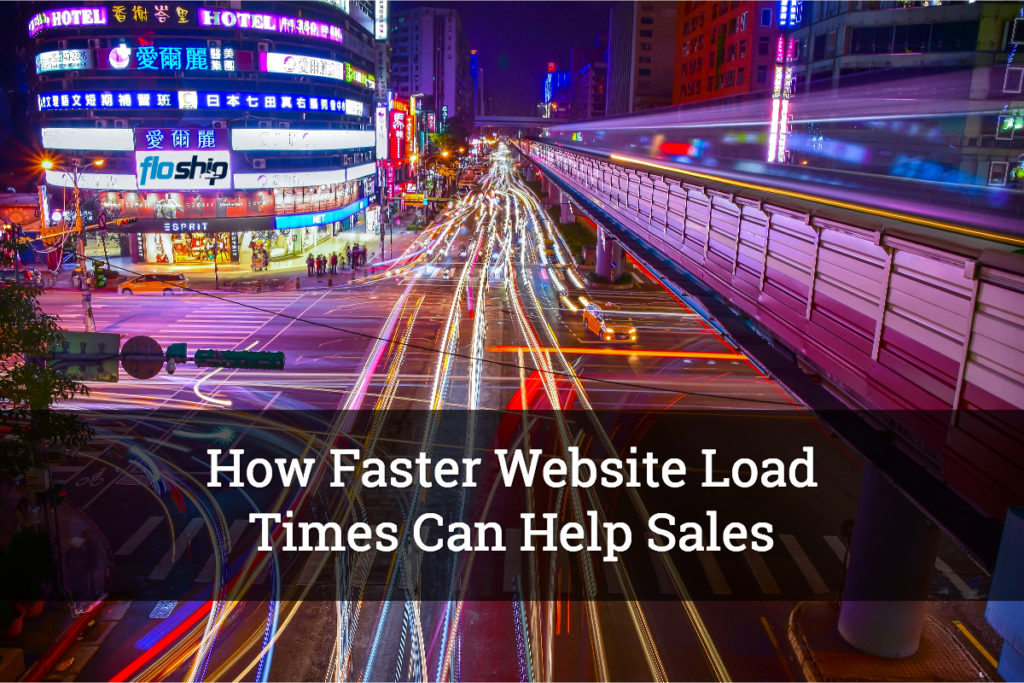Your website is the front line of your online sales team.
Some businesses don’t consider that their business’ website is this important, instead they think that their website is just a necessary evil of being in business and just ‘tick the box’ of having one.
This attitude often means that they end up with a website that doesn’t function as effectively as it could.
One of the main areas where your website can falter, and affect sales, is its load speed:
How Is Speed Connected With Sales?
Customers are particularly demanding when it comes to their online experiences nowadays:
Google has long recognized this and therefore is continuously developing a ranking system where websites are ranked not only on their relevance to a particular search query but also to the experience they provide customers.
Speed is considered part of the customer experience:
47% of customers expect that a website will load within 2 seconds and 40% will bounce (abandon) website if it takes longer that 4 seconds to load.
These two facts on their own demonstrate that without a fast site, you could be losing a significant number of customers without them even arriving on your site and seeing your products.
Research has also found that for every second it takes for your site to load; your revenue can reduce by 7%. In 2018, the average online retailer’s website speed is dependent on the industry and there is a trend of a focus on mobile. This could mean that those businesses are losing out on rankings and thus sales when their not optimizing for mobile.
Even a one second delay is worth nearly an entire month’s revenue to a business. For a business turning over $100,000 per day, this can be equal to $2.5 million per year. If Amazon’s site was to slow down by one second, the ecommerce giant could lose out on $1.6 billion in sales.
What About Mobile Speeds?

Mobile internet browsing hasn’t yet caught up with desktop mobile searching and speed can be slower on mobile devices:
Yet that doesn’t mean that speed isn’t an issue. Businesses still need to develop a website that will load in a reasonable amount of time through a mobile device.
While on a desktop, customers rarely waited past the 4-6 seconds, on a mobile device, customers are willing to wait between 6 and 10 seconds. While longer, it doesn’t offer businesses much leeway.
From July 2018, Google will start using mobile speed as a ranking factor. This “Speed Update” will only affect sites that deliver the slowest user experience, which is a small percentage of queries. To evaluate your site’s mobile speed, Google recommends using Chrome User Experience Report or Lighthouse.
How To Test Your Website’s Speed
One of the major issues that prevent businesses from accurately testing speed is that their websites are cached, so when viewing your site it can seem remarkably faster than it would to new customers.
Therefore, you need an independent way of testing your website’s speed and analysis of how you can improve your website.
One option is to use Google PageSpeed Insights. This simple tool only requires the URL (address) of your website and will give you a score out of 100 on how it performs on desktop and mobile, the higher the score, the better the performance of your website.
It also provides you with some instructions on how you can improve your website’s speed.
Google also offers optimized images and coding to use that can help to speed up your website, though ensure to backup before installing these as there is no guarantee they work with your site’s infrastructure. See the latest update to pagespeed insights in the video below:
However, Google doesn’t provide you with the load time. For this, you need to go to GTMetrix or Pingdom. Both have free tools that tell you the speed of your site and its performance compared to others on the market. It is best to use both of these tools as the results can differ and you should use an average.
These sites also have a detailed report on how you can improve your site’s speed. Pingdom even offers a premium option to monitor your website every day so you can spot trends in your site’s speed.
Conclusion
Your site’s speed remains an important factor to increase site conversions:
Customers expect that your website will load fast whether this is on a mobile device or desktop. A slower site can mean a significant loss in your sales and can damage your business’ chance to grow and develop. Testing your website with Google, Pingdom and GT Metrix and using their recommendations can help increase your website’s speed and offer you a significant chance of growing your sales.
What is your website’s speed? How can you improve it?
Looking for a way to improve your WordPress website’s speed? Check out this guide by UKwebhostreview.com.
Take Action:
- Test your website’s speed during quiet and busy traffic times.
- Look for ways to improve your website’s speed.
- Add in a weekly routine to test your website’s speed.
INFOGRAPHIC: How Speed Affects Your Website
Embedded from A/B testing software

Ready To Upgrade Your Logistic Solution?
Speak to Floship ecommerce logistic consultant about improving your global support chain today


![[Infographic] The Interesting Effect of Speed on Conversion Rates - An Infographic from Convert.com](https://blog.convert.com/wp-content/uploads/2017/06/InfographicHow-speed-affect-your-website.jpg)


